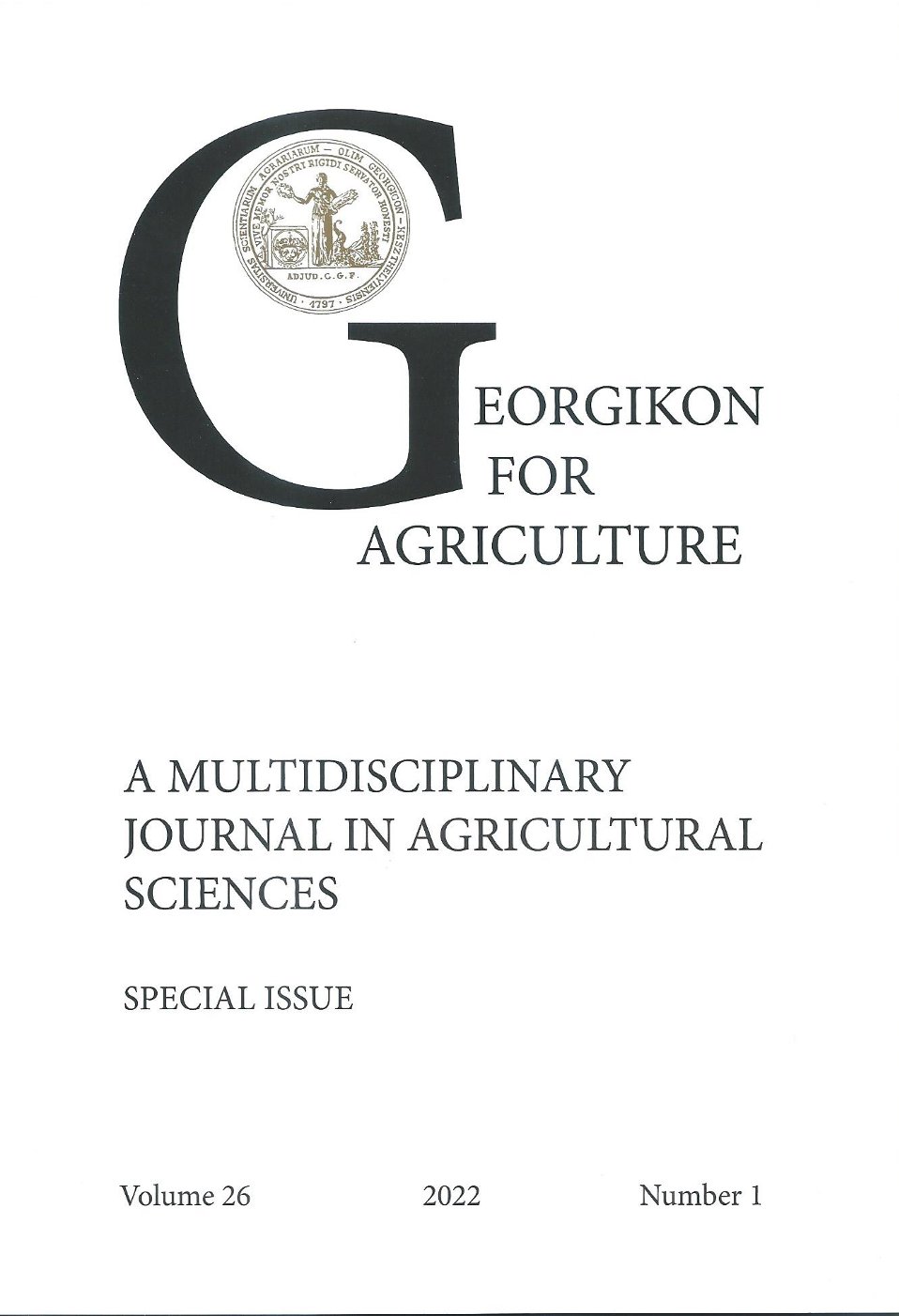Növényvédő szerek primer szemirritációs vizsgálata EpiOcularTM szövetmodell alkalmazásával
Keywords:
eye irritation, in vitro, Draize test, MTT assay, EpiOcular™ tissueAbstract
The in vivo Draize-test, which is the based on the OECD 405 guideline, is one of the most criticized in vivo methods, because of the subjective nature of the clinical observations and injuries of the test animals. Nowadays, several in vitro tests are available which can be partly or totally replaced the in vivo eye irritation testing depending on the circumstances. The EpiOcular™ model is one of these alternative methods. Five different agrochemicals were examined with this method and the irritation potential of the test items were predicted by measurement of their cytotoxic effect, as reflected in the MTT assay, on the EpiOcular™ tissue. Four test items showed irritation potential and one test item did not show irritation potential out of five examined test items. Compared these results with the available information about in vivo data of the tested agrochemicals, all test items are corresponded to them.
References
Budai, P., Kormos, É., Buda, I., Somody, G. and Lehel, J. 2021. Comparative evaluation of HET-CAM and ICE methods for objective assessment of ocular irritation caused by selected pesticide products. Toxicology in Vitro. 47. 105150.
Kolle, S.N., Moreno, M.C.R., Mayer, W., van Cott, A., van Ravenzwaay, B. and Landsiedel, R. 2015. The EpiOcular™ Eye Irritation Test is the Method of Choice for the In Vitro Eye Irritation Testing of Agrochemical Formulations: Correlation Analysis of EpiOcular Eye Irritation Test and BCOP Test Data According to the UN GHS, US EPA and Brazil ANVISA Classification Schemes. ATLA. 43. 181–198.
OECD 405, 2012. Guidelines for the Testing of Chemicals, Section 4, No. 405, „Acute Eye Irritation/Corrosion” 02 October 2012.
OECD 492, 2019. Guidelines for the Testing of Chemicals, Section 4, No. 492, “Reconstructed human Cornea-like Epithelium (RhCE) test method for identifying chemicals not requiring classification and labelling for eye irritation or serious eye damage” 18 June 2019.
EpiOcular™ Eye Irritation Test (OCL-200-EIT) SOP; For the prediction of acute ocular irritation of chemicals. For use with MatTek Corporation’s Reconstructed Human EpiOcular™ Model (02 February 2021).
Tavaszi, J., Budai, P., Pálovics, A. and Kismányoki, A. 2008. An alternative test battery in detecting ocular irritancy of agrochemicals. Communications in agricultural and applied biological sciences. 73(4). 891-895.
Downloads
Published
Issue
Section
License
Copyright (c) 2022 Buda István, Lehel József, Szabó Rita, Budai Péter

This work is licensed under a Creative Commons Attribution-NonCommercial-NoDerivatives 4.0 International License.
Cikkre a Creative Commons 4.0 standard licenc alábbi típusa vonatkozik: CC-BY-NC-ND-4.0. Ennek értelmében a mű szabadon másolható, terjeszthető, bemutatható és előadható, azonban nem használható fel kereskedelmi célokra (NC), továbbá nem módosítható és nem készíthető belőle átdolgozás, származékos mű (ND). A licenc alapján a szerző vagy a jogosult által meghatározott módon fel kell tüntetni a szerző nevét és a szerzői mű címét (BY).




